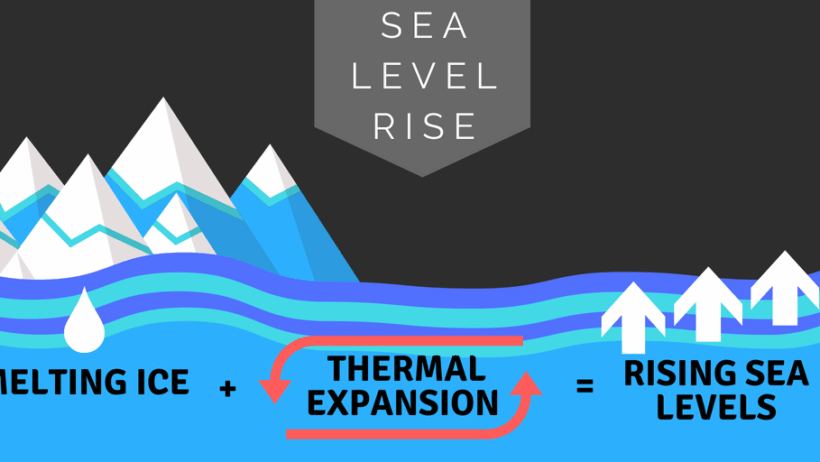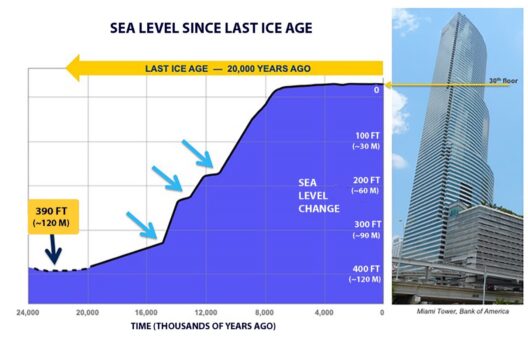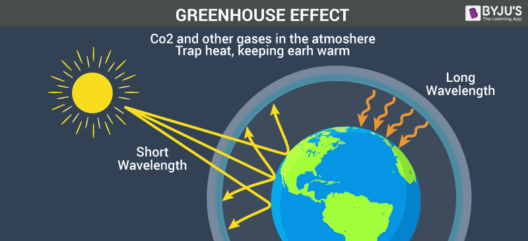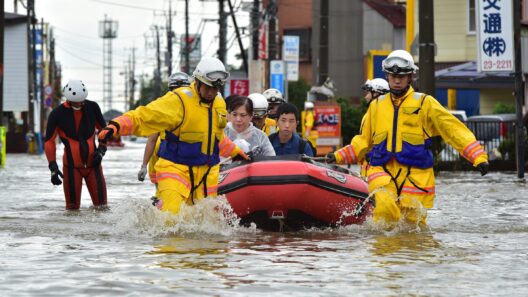As we traverse the chapters of climate change, one phenomenon illuminates the canvas of environmental concern: the relentless rise of sea levels. Understanding the mechanics behind this unsettling trend is crucial for recognizing its implications on humanity and ecosystems alike. So, what are the scientific intricacies driving these oceanic elevations?
The mechanics of sea level rise are twofold, invoking both thermal expansion and the melting of glacial ice. These factors, often discreet yet powerful, play a central role in redefining coastlines and altering habitats.
Thermal expansion occurs due to the simple yet profound principle of physics: when water heats, it expands. As global temperatures escalate, the oceans absorb excess heat, causing the water to swell. This expansion accounts for nearly half of the rise in sea levels observed today. The thermal dynamics of our planet serve as a poignant reminder of how intricately intertwined climate systems are, bringing forth the aesthetic image of an ocean expanding silently yet aggressively, its surface a reflection of the sun, yet underneath, the ocean claims more territory with each passing year.
As temperatures continue to rise, a subcutaneous tension develops within the oceanic bodies, slowly but inexorably altering landscapes and coastal ecosystems. Coastal cities, often bustling with life and vibrant culture, face an uncertain future. The juxtaposition of their lively ambiance against the looming threat of encroaching waters forebodes a dramatic shift that could redefine human interaction with nature.
In tandem with thermal expansion, the second primary factor contributing to rising sea levels is the alarming rate at which the world’s glaciers and ice sheets are melting. The Greenland Ice Sheet and Antarctica’s glaciers act as colossal freezers, holding vast quantities of freshwater. As global temperatures ascend, the integrity of these ice masses erodes at an accelerating pace. The loss of these icy behemoths is not simply an aesthetic tragedy. It heralds the release of freshwater into the oceans, further exacerbating the rise in sea levels.
In recent decades, satellite observations have revealed an astonishing acceleration in the rate of ice loss. Where glaciers once stood as stoic sentinels, they are now but memories, disintegrating into frigid waters. Each ton of water released shifts the delicate balance of saltwater and freshwater, with far-reaching implications for marine ecosystems, weather patterns, and even oceanic currents.
The collapse of these ice formations is not merely an environmental concern; it is a harbinger of chaos within oceanic ecosystems. As glaciers retreat, they expose new land, but they also introduce significant changes to nutrient flow and marine biodiversity. Animals dependent on specific habitats find their territories altered or obliterated, invoking a sense of loss akin to watching a gallery of ancestral art vanish.
As we delve deeper, it is crucial to recognize the role of anthropogenic factors. Human activities, particularly the combustion of fossil fuels, amplify the greenhouse gases within our atmosphere, significantly contributing to the warming climate. This elevation in average global temperatures serves as a catalyst for both thermal expansion and glacial melt. The tapestry of consequences stretched by human influence beckons serious contemplation: can we rein in this cycle of destruction, or are we destined to bear witness to the annihilation of coastlines cherished through generations?
In addition to primary factors, regional variations present another layer of complexity. Not all areas experience sea level rise uniformly. Local geographical factors, ocean currents, and land subsidence contribute to this differential rise, creating a patchwork of environmental and socio-economic challenges. For instance, cities like New Orleans and Miami are not merely facing rising tides; they are also grappling with the ground beneath them slowly giving way. The aesthetic juxtaposition of vibrant cityscapes against the stark reality of their sinking soils challenges our perceptions of resilience and sustainability.
Efforts to mitigate the impending consequences of ocean level rise are critical. Coastal management strategies offer a glimpse into sustainable futures. The restoration of natural barriers such as mangroves and wetlands can serve as bulwarks against encroaching waters. These ecosystems, often taken for granted, perform the dual function of providing vital habitats for marine species while acting as natural buffers against rising tides.
The notion that human agency can rectify past mistakes gives rise to a crucial contemplation: what legacy do we want to leave behind? Protecting coasts means more than safeguarding land; it means preserving cultures, histories, and futures intertwined with these ecosystems. Re-envisioning our relationship with the natural world and embracing innovative solutions may well dictate the course of climate action.
While the current trends present an intricate tapestry of challenges, they also offer an invitation for transformative action. Understanding sea level rise is not merely an academic exercise; it is pivotal to fostering an informed populace poised for environmental stewardship. As the mystery of changing ocean levels unfolds, may curiosity drive us to seek solutions and embrace our responsibility to the Earth.
Ultimately, the rise of sea levels is an unfolding narrative—a story marked by both urgency and beauty. In every shifting tide, we find echoes of our planet’s history and the choices that shape its future. The aesthetics of nature’s resilience serve as a poignant reminder: our oceanic expanse, both a marvel and a threat, can be part of a narrative that champions sustainability, restoration, and coexistence.








